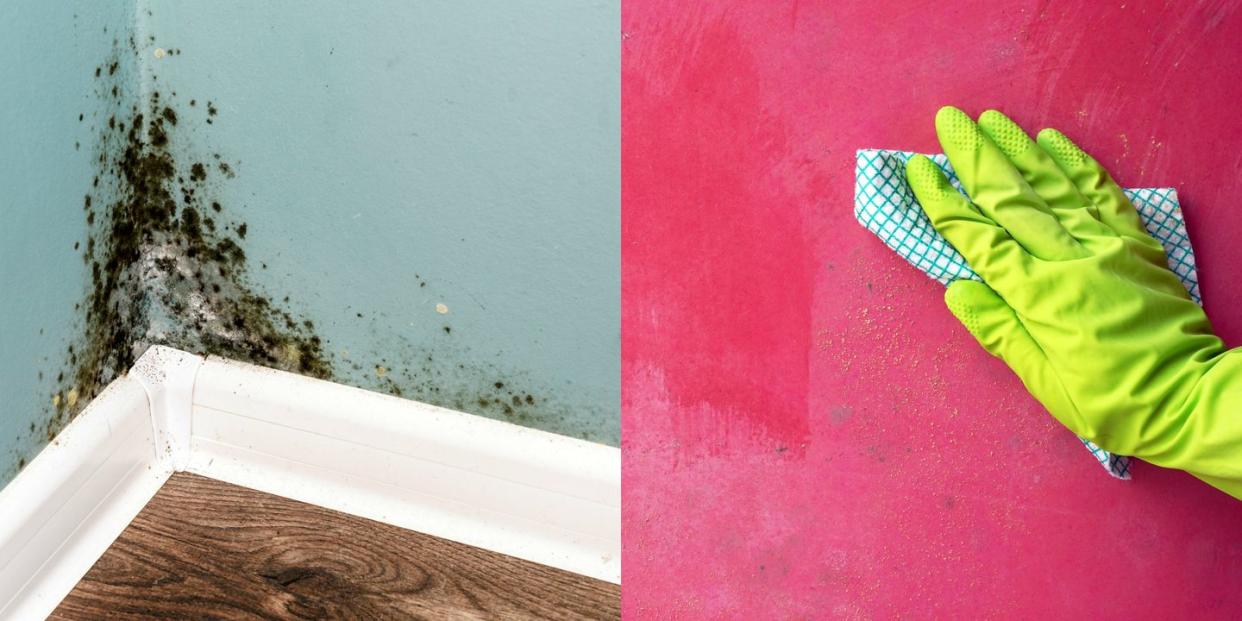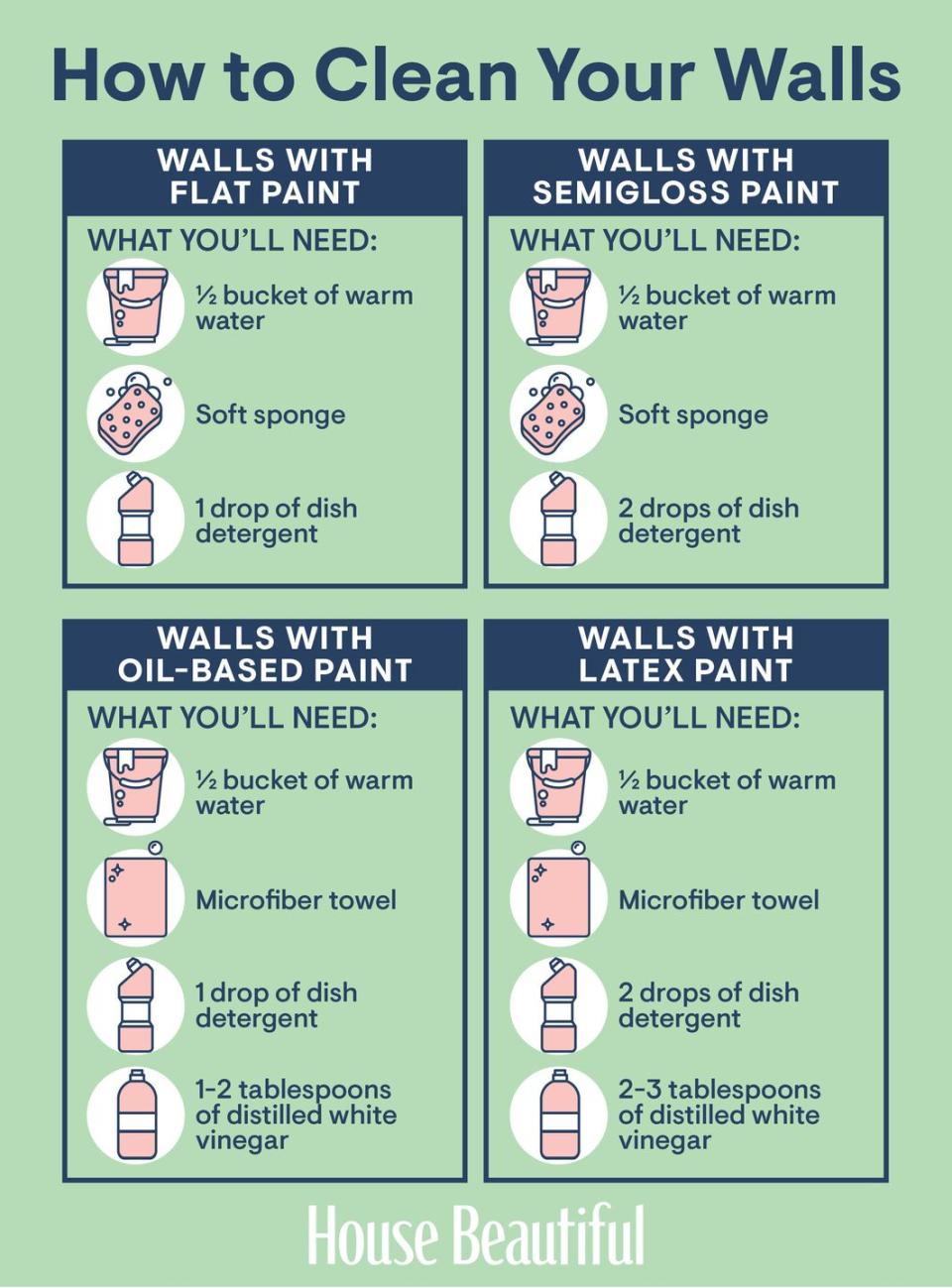You're Probably Cleaning Your Walls Wrong

Spring cleaning is a little overdue if you haven't started yet, but better late than never. If nothing else, you've probably swapped your sweaters for shirts and your faux-fur throw for a knit one. But I bet you didn't think about cleaning your walls. Well, here's a guide for how to do it, based on the type of paint you have.
First things first—this is what you'll need: a bucket, a sponge or microfiber towel, dish detergent, distilled white vinegar, and water.
How to clean walls coated with flat paint
Flat paint is less durable than other finishes, which means it is easier to damage, and that's the last thing you want to do. So for walls with flat paint, you need to take a little extra precaution. Completely wring out the sponge each time you wipe, and use a soap solution that's very light on detergent. Most importantly, do not use vinegar in this solution; use only dish detergent and water.
How to clean walls coated with semigloss paint
Semigloss paint is a bit more durable, so bring on the dish detergent–but not too much. It's best to use a soft sponge for this type of paint, and you still want to make sure you're completely wringing out the sponge to avoid creating any streaks on your walls.
How to clean walls coated with oil-based paint
Oil-based paints are even more durable than semigloss, so you definitely want to use vinegar and dish soap in this solution. This solution is perfect if you have oil-based paint in your kitchen, because it helps get all of the grease and nasty grime off.

How to clean walls coated with latex paint
When cleaning walls with latex paint, you want to add dish detergent and distilled white vinegar to your solution. You can use a little of both or just use two tablespoons of vinegar—or three tablespoons if you know you're going to need to use some elbow grease.
No matter what type of paint you have on your wall, fill the bucket about halfway and never use more than a couple drops of dish detergent. Some alternatives: castile soap instead of dish detergent, a microfiber cloth instead of a sponge, and a long-handled, soft-bristled brush for hard-to-reach places. Just make sure that whatever you're using to clean is not dripping wet—you want all the water to be wrung out and for it to be just a little damp.
Here's a cute chart to recap all of the key things you need to know to clean your walls. Happy cleaning!

Follow House Beautiful on Instagram.
You Might Also Like

